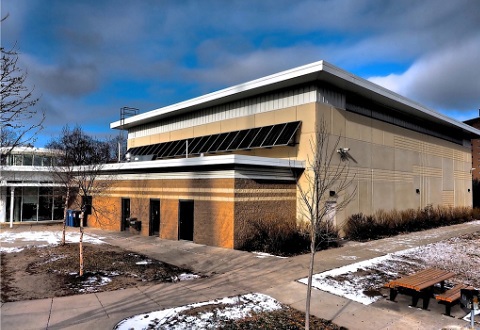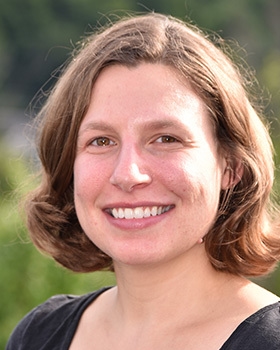The MPRB Solar Demonstration Project: A Unique Collaboration Brings Solar to Diverse Communities
 With a grant to the Minneapolis Park and Recreation Board (MPRB), the Xcel Energy Renewable Development Fund supported the installation of 200 kW of solar PV in the Minneapolis parks system to model the seamless incorporation of renewable energy into public amenities. The PV installations demonstrate a wide variety of solar designs and are featured in high-traffic public areas, with the potential to reach the parks’ 23 million visitors per year. The project includes education and interpretive components, while demonstrating an environmentally friendly and sustainable solution for public works or park projects to mitigate energy costs, reduce carbon emissions, and promote local solar businesses.
With a grant to the Minneapolis Park and Recreation Board (MPRB), the Xcel Energy Renewable Development Fund supported the installation of 200 kW of solar PV in the Minneapolis parks system to model the seamless incorporation of renewable energy into public amenities. The PV installations demonstrate a wide variety of solar designs and are featured in high-traffic public areas, with the potential to reach the parks’ 23 million visitors per year. The project includes education and interpretive components, while demonstrating an environmentally friendly and sustainable solution for public works or park projects to mitigate energy costs, reduce carbon emissions, and promote local solar businesses.
The MPRB Solar Demonstration Project had four specific goals: first, to install 200 kW of photovoltaic capacity throughout the Minneapolis park system; second, to utilize Minnesota-made solar panels to support the local solar industry; third, to demonstrate the value of different solar designs such as canopies where roof-mounted solar facilities are not feasible due to structural, historical, or other barriers to traditional solar installations; and fourth, to promote the use of solar through education and interpretive programs that increase the awareness of solar.
The Xcel Energy Renewable Development Fund, which is financed by Xcel Energy electric ratepayers, promotes the start-up, expansion and attraction of renewable electric energy projects and companies in the utility’s service area.
Engaging Diverse Communities in Solar Education
Minneapolis is an economically and ethnically diverse city. One of the objectives for this project was to spread the solar installations among all six of the city’s park districts to reach people who may not readily have access to solar in their neighborhood. Spreading out the installations has reached neighborhoods with varied characteristics. Three of the five MPRB Solar Demonstration Project sites are in areas where residents’ annual income is below the poverty threshold and where 50 percent or more of residents are people of color. The other two sites draw from a regionally diverse pool of visitors.
The project leverages the potential audience at some of the most popular, heavily used, public facilities in Minneapolis to show the park system’s visitors several creative examples of urban solar energy installations. Each site contains interpretive signs to help educate park users. Those signs, combined with a multi-pronged digital campaign that include a social media video, rooftop news conference, and periodically updated web page, amplify the reach of the solar demonstrations.
The project went through an extensive community engagement process to consider public priorities and receive community feedback. More than 50 proposed sites were evaluated for the best potential for visibility, safety and security, environmental impact, structural challenge, and budgetary limitations.
Ultimately, five sites were selected.
Parade Ice Garden Arena: The arena has the greatest electrical usage of any of the MPRB facilities. A 153-kW roof-mounted ballasted array is expected to produce about 184,000 kWh per year, roughly 15 percent of the building’s annual power consumption. The arena’s electricity demand reaches its highest point on hot summer days when solar output is also at its highest, thereby reducing energy demand at a crucial time. The solar array, along with several recently completed energy efficiency upgrades at the arena, saves taxpayers hundreds of thousands of dollars each year while cutting greenhouse gas emissions.
Webber Park Natural Swimming Pool: This pool became the first public natural swimming pool in North America when it opened on July 24, 2015. It is unique in that it uses filters and plants, rather than chemicals, to cleanse its water. The unique characteristics of the pool draw visitors from across the community. A 4.6-kW roof-mounted solar array was installed and is expected to produce about 6,433 kWh per year, roughly 15 percent of the facility’s total electricity usage.
Rev. Dr. Martin Luther King Jr. Recreation Center: This 18.5-acre park serves the King Field neighborhood in the southwest part of the city. It provides recreational opportunities to many communities of color and offers important services to low-income residents, such as free meals for youth during the summer. The 6.2-kW roof-mounted solar array is expected to produce about 8,670 kWh per year, which is roughly 10 percent of the facility’s total electricity usage.
East Phillips Park Cultural and Community Center: A 6.5-kW wall-mounted solar array is expected to produce about 9,089 kWh per year, roughly 10 percent of the center’s total electricity use. This installation demonstrates the use of solar in a challenging location: because the gymnasium roof did not have the structural integrity to support solar panels, a wall-mounted array was used. The site was selected because the facility is used year-round, with a variety and levels of program activities ranging from community recreation to cultural events that support the great ethnic diversity of the neighborhood.
Lake Nokomis Main Beach: A 7.4-kW solar canopy array was installed at the beach to provide much-needed shade for beachgoers. The solar array is expected to produce about 10,348 kWh per year, which is roughly 15 percent of the beach’s total electricity use during the summer. In the winter, the solar array will deliver power to the grid. As a regional resource, the beach draws visitors from all over the city and metropolitan area, including visitors from around Minnesota.
Public Education and Program Results
The MPRB Solar Demonstration Project highlights several varieties of solar installation (roof-mounted, wall-mounted, canopy) across a variety of unique, diverse urban environments. Each installation had a unique design feature. For example, helical pier foundations were used for the canopy at Lake Nokomis to accommodate the unstable, sandy soil conditions, and custom racking was designed for the East Phillips array to allow wall mounting.
To date, the solar arrays installed via the MPRB Solar Demonstration Project have displaced 288 megawatt hours of traditional electrical power and provided 130 registered renewable energy certificates (RECs). The environmental benefits from the generation of this renewable energy include a reduction in air emissions of 214 metric tons equivalent of CO2. The project has provided an interpretive program and educational opportunities that highlight the installed arrays’ energy output, carbon offsets, and other educational features as a way to increase solar demand in Minnesota.
The project has also supported the local clean energy economy: two Minnesota-based solar installation firms were hired to install the five arrays, and all the solar panels were manufactured in Minnesota. Additionally, 27 percent of the total project expenditures were allocated to City of Minneapolis Target Market Program businesses and Minnesota Unified Certification Program Disadvantaged Minority Owned Business Enterprises.
The RDF grant of $969,741 awarded to the Minneapolis Parks and Recreation Board contributed significantly to the $1,119,741 program budget. The program has educated millions of park users about the viability of solar technologies, reduced carbon emissions, and supported local economic development, which are excellent results for Minneapolis and for Minnesota. This project could readily be replicated in other locations.
The Xcel Energy Renewable Development Fund was awarded a 2018 State Leadership in Clean Energy Award for the MPRB Solar Demonstration Project. A report featuring a detailed case study on this award-winning program is available at: 2018 State Leadership in Clean Energy Awards
The Clean Energy States Alliance hosted a webinar highlighting Minnesota’s MPRB Solar Demonstration Project on August 2, 2018.
This blog post was also published in Renewable Energy World.
Published On
July 23, 2018

